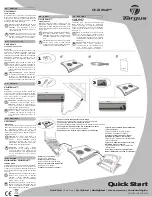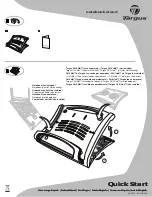
Working with the notebook
LCD screen
LCDscreen
Notes
High-quality LCD screens (TFT) are installed in notebooks from Fujitsu. For technical reasons,
TFT monitors are manufactured for a speci
fi
c resolution. An optimal, clear picture can only
be ensured with the correct resolution intended for the relevant TFT monitor. A monitor
resolution which differs from the speci
fi
cation can result in an unclear picture.
The screen resolution of the LCD monitor of your notebook is optimally set at the factory.
Current production technology cannot guarantee an absolutely fault-free screen display. A few
isolated constantly lit or unlit pixels may be present. The maximum permitted number of such
faulty pixels is speci
fi
ed in the international standard ISO 9241-307 (Class II).
Example:
A screen with a resolution of 1280 x 800 has 1280 x 800 = 1024000 pixels. Each pixel consists of
three subpixels (red, green and blue), so there are almost 3 million subpixels in total. According to ISO
9241-307 (class II), a maximum of 2 light and 2 dark pixels and in addition 5 light or 10 dark subpixels
or an equivalent mix (1 light subpixel counts as 2 dark subpixels) are allowed to be defective.
Pixel
A pixel consists of 3 subpixels, normally red, green and
blue. A pixel is the smallest element that can be generated
by complete functionality of the display.
Subpixel
A subpixel is a separately addressable internal structure
within a pixel that enhances the pixel function.
Cluster
A cluster contains two or more defective pixels or
subpixels in a 5 x 5 pixel block.
Background lighting
TFT monitors are operated with background lighting. The luminosity of the background
lighting can decrease during the period of use of the notebook. However, you can
set the brightness of your monitor individually.
Synchronising the display on the LCD screen and an external monitor
For more information, please refer to the chapter
"Key combinations", Page 43
under "Display output, switch between".
Ambient Light Sensor
In the case of delivery with a
Windows
operating system, the screen brightness is regulated
by means of the ambient light sensor and depending on the particular light conditions. This
results in optimum readability and longer battery life at the same time.
30
Fujitsu
















































